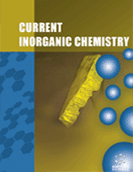Abstract
Layered double hydroxides (LDH) with iron(II) and iron(III) as the diand trivalent metal cations of the hydroxide layers (green rusts; GRs) can be intercalated by surfactants combining strong sorption of hydrophobic compounds with the strong reducing strength of the GRs. In addition the surfactant-intercalated GRs are interesting precursors for engineering of GRs and in particular for delamination and synthesis of new GRs starting from single-sheet iron oxides. Surfactant-GRs can be synthesized via ion exchange and coprecipitation while care should be paid to prevent formation of byproducts such as surfactant salts. Fatty acids and linear alkylbenzene sulfonates adopt a bilayer structure in the GR interlayer. Surfactantintercalated LDHs and GRs show strong sorption of hydrophobic compounds characterized by linear sorption isotherms and organic-matter-normalized distribution coefficients (logKom) in the range 1.92 to 3.32. When fatty acid intercalated GRs are used for reductive dehalogenation of tetrachloromethane, fully dehalogenated products are obtained at high rates in contrast to the much slower rates and incomplete dehalogenation observed for GRs with simple inorganic anions in the interlayer. The surfactant interlayer is expected to play a key role for reductive dehalogenation of halogenated solvents through strong sorption of the substrates, as a transport medium in contact with the iron(II)- iron(III) hydroxide layers and for stabilization of intermediates.
Keywords: Dehalogenation, green rust, layered iron(II)-iron(III) hydroxides, sorption, surfactant-intercalation, synthesis of LDH.
 7
7

